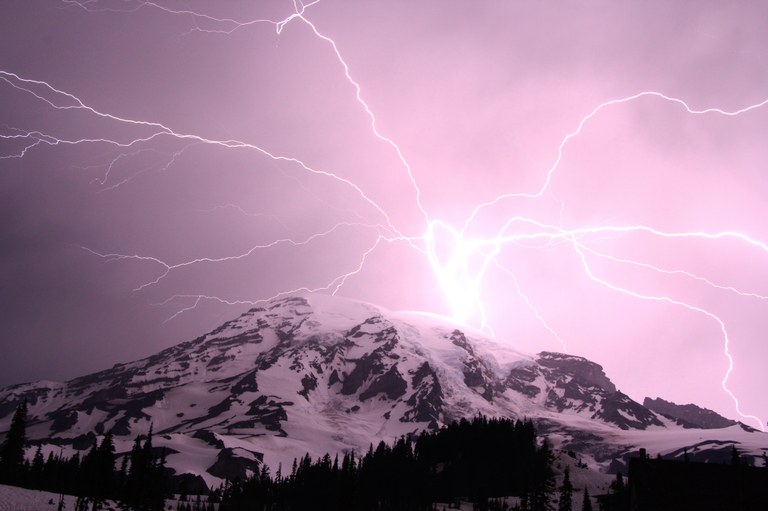How To Stay Safe in a Storm
by Todd Miller
Spend any significant amount of time in the mountains, and you can plan on getting caught in a few storms. In my years of hiking, camping and working as a mountain guide, I have been knocked off balance by the wind, spent the night shoveling out tents in a blizzard, and watched nearby trees explode after being struck by lightning. Although certainly dangerous, storms can also be a beautiful and exciting part of the mountain experience if you play it safe.
The first rule to staying safe in a storm is simple—pay attention. Monitor the forecasts for your destination closely for several days until your departure. Once you’re in the backcountry and forecast updates are no longer available, try to gain a sense of what is happening by paying attention to the skies. When a front is approaching, lens-shaped clouds often form over high peaks and the sky will fill with cirrus clouds. Check out a book on mountain weather to learn about these and other signs of an approaching weather system.


A pink flash of lightning fills the sky during a storm over Mount Rainier. Photo by James Clark.
Occasionally, no matter how careful you are about checking the weather and watching the skies, you will get caught in a storm. Whether it’s a summer thunderstorm or a winter snowstorm, the best course of action is to descend. Descending to a lower elevation leaves you less exposed to the fury of the storm. You are less likely to be the tallest object around in the event of a lightning storm. Another bonus to coming down is that if you descend far enough, say, all the way to town, you can get beer and food.
In some cases, however, it’s simply not possible to pack up and descend. You may be at a high camp and already caught in the weather, or perhaps you are in exposed terrain and feel that it would be unsafe to descend on rocks now slick with rain. Your choice of whether or not to descend depends on your circumstances, but there are several factors to consider.
First, if you choose to wait out the storm, how long are you prepared to wait it out? The worst part of a summer thunderstorm will typically last only a few hours. However, if you are up high in the fall and a winter storm is approaching, it may be best to pack up and make an attempt to get out of there before visibility deteriorates further. Fall and winter snowstorms can last for long periods of time in the Cascades; choosing to stay put in a high camp and wait out an approaching storm, which could last for more than a week, may be unwise.
Here are two key questions to ask yourself—how far away is relative safety and what is the terrain like? If you can dash down below tree line quickly, go for it. If the safety of a lower valley is far away and there is tricky terrain to negotiate, it may be best to wait it out.
Getting caught in a storm is a risk that we all accept when we enter the mountains. This article merely provides an introduction to the topic; true knowledge will come from years of experience, watching the weather and learning not to press your luck. Remember, the best way to stay safe in a storm is to not get caught in one in the first place.

